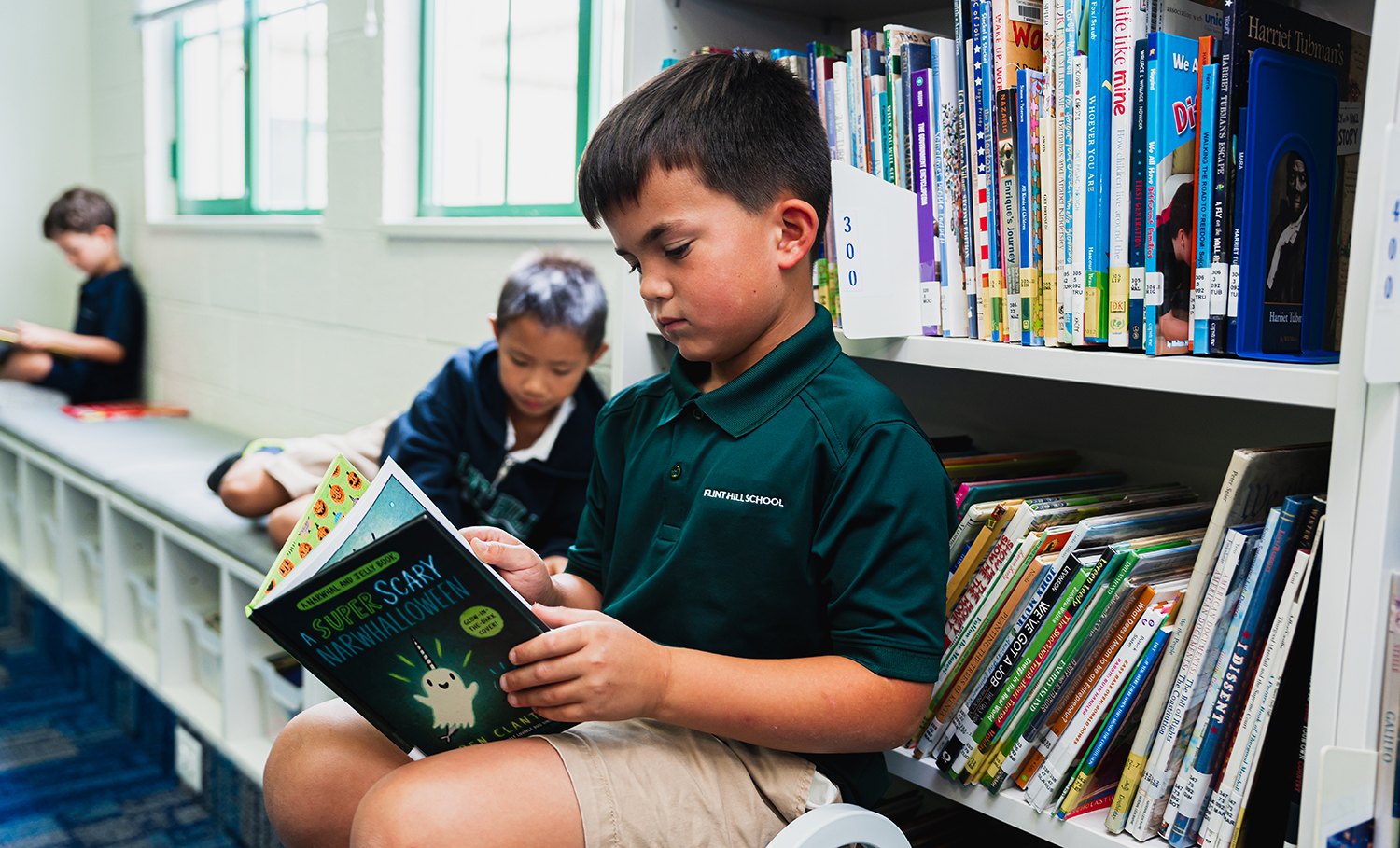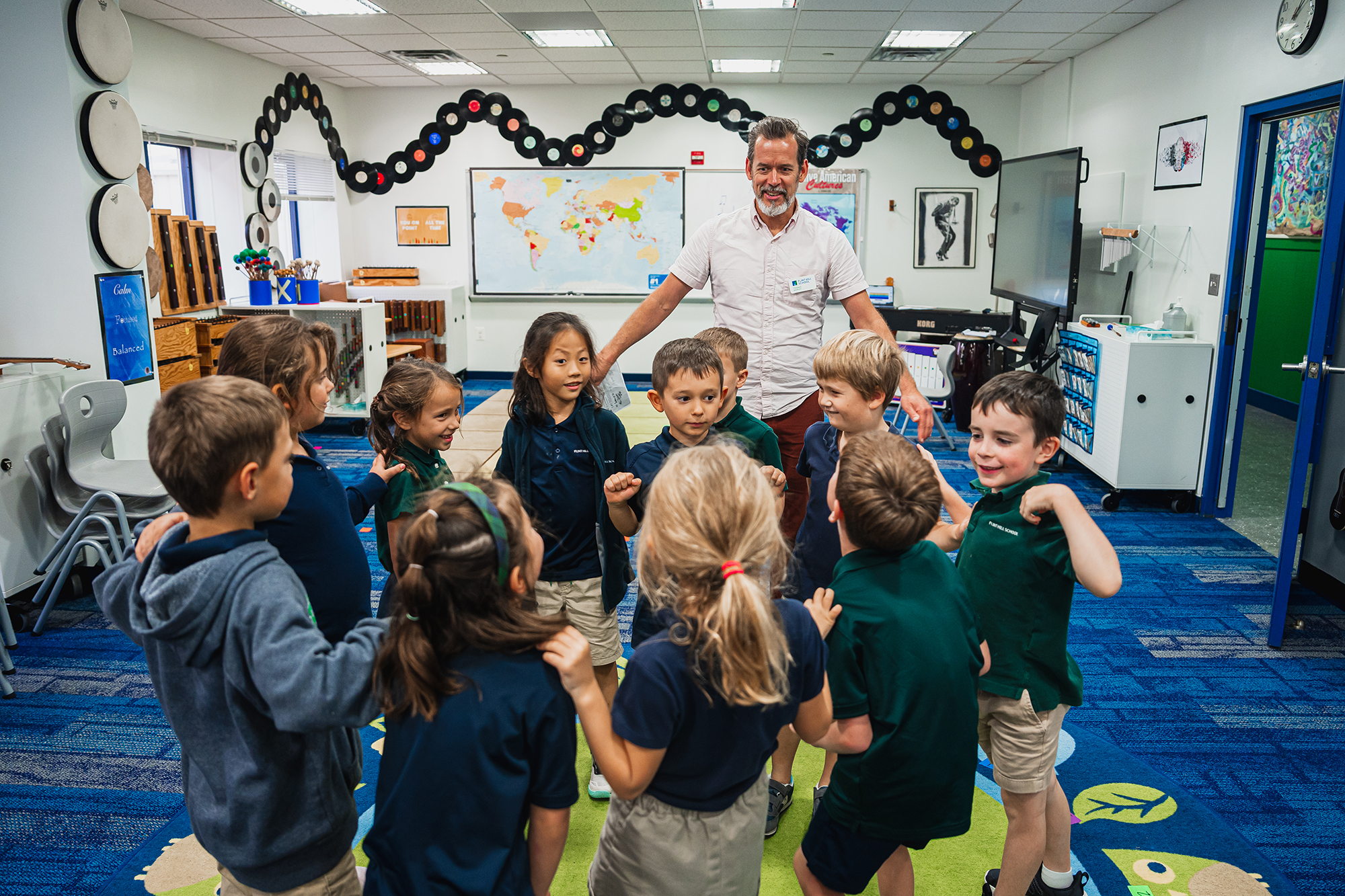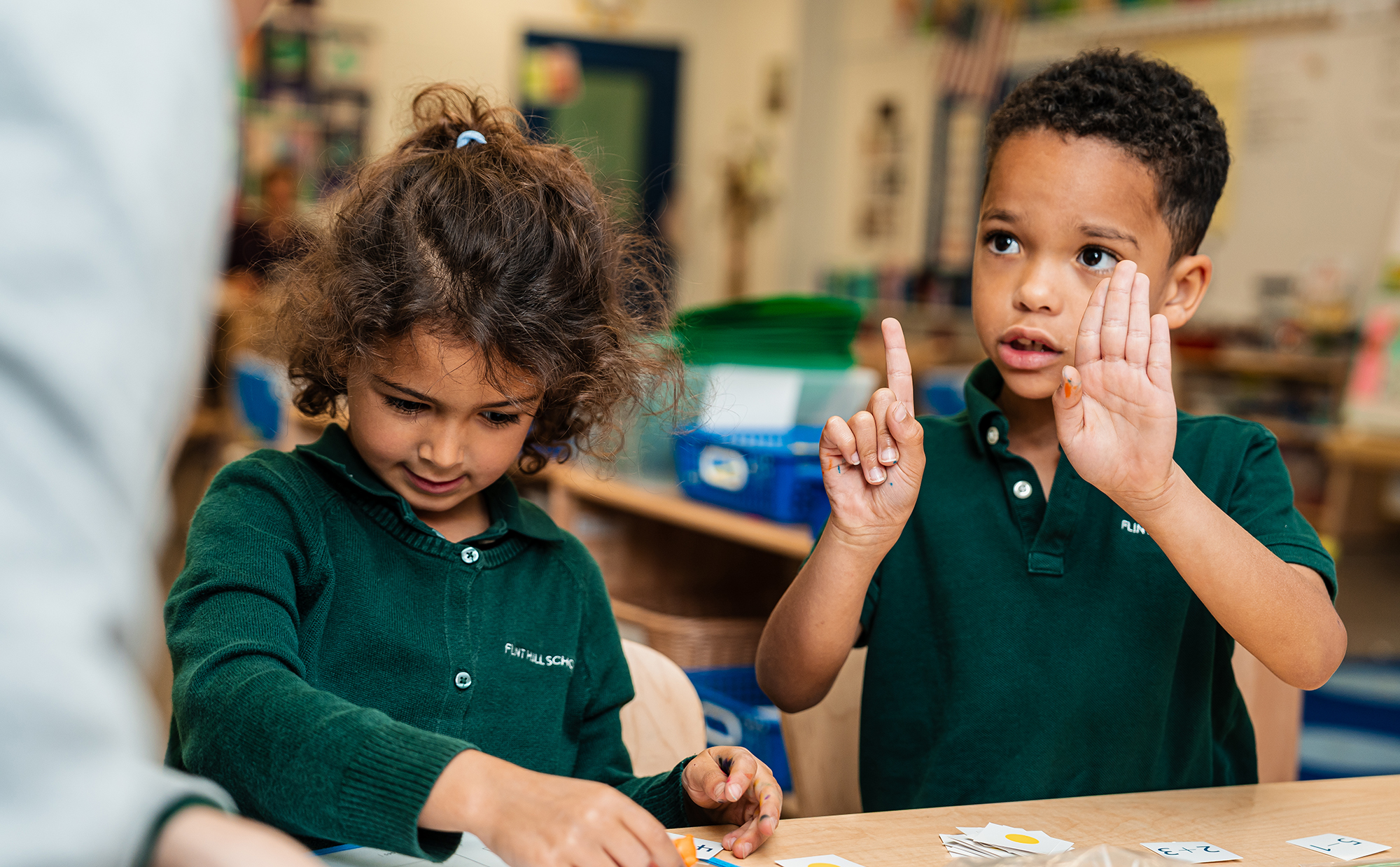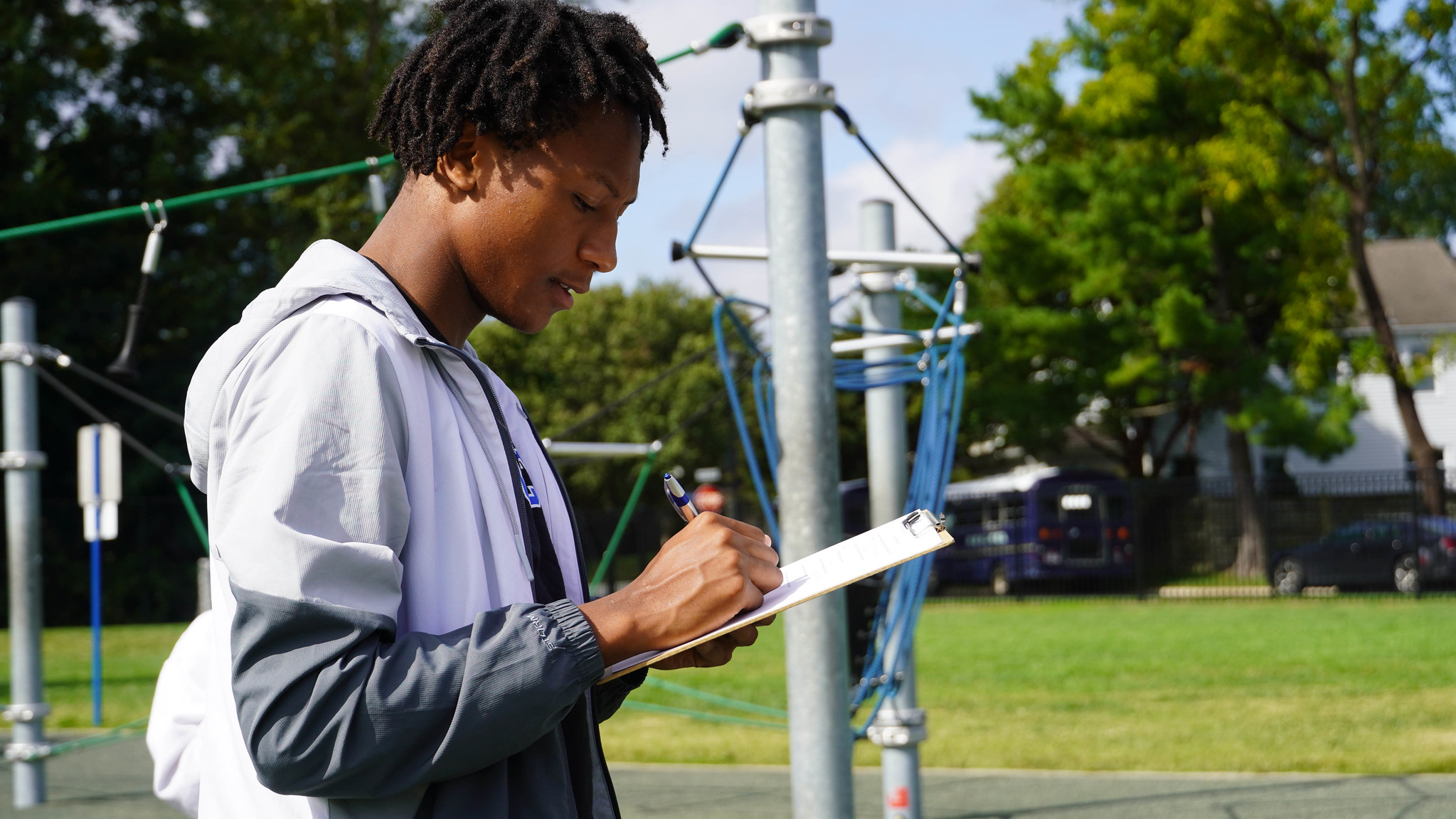HUSKY HIGHLIGHTS

June 20, 2025
By Christine Dwyer, LS Language Arts Department Chair
Early Literacy at Flint Hill: The ‘Science of Reading’
There has been a steady buzz in the field of literacy around what is known as the “science of reading.” It’s a body of research that pinpoints precisely how children learn to read, gathered by professionals in education, neuroscience, psychology, linguistics, and other relevant fields.
The science tells us that developing readers need to understand two key concepts:
- decoding (how letters and sounds work together to form words) and
- language comprehension (what those words mean).
When decoding and language comprehension work together, readers are able to attain the ultimate goal of reading comprehension.
As a human-made construct, decoding must be taught in a way that is both explicit and sequential. Consider the sound /ou/ and how it appears in each one of these words: four, house, group, cousin. Developing readers need to know the various sounds that /ou/ can make, as well as have knowledge about the vocabulary, in order to make sense of the word. A student may be able to use decoding skills to sound out a less frequently seen word (for example: discounted), and true comprehension emerges when they know the vocabulary word and can use it to make meaning in a sentence.
When Did Flint Hill Transition to This Pedagogy?
While the science of reading is gaining traction globally, Flint Hill's Lower School was ahead of the curve. We embraced this evidence-based pedagogy years ago.
A few years ago, teachers and administrators invested multiple days in professional training to adopt a specific scope and sequence for early literacy instruction and to learn how to integrate multisensory strategies that would help students develop skills in the major areas of reading: phonological awareness, decoding, vocabulary, fluency, and ultimately comprehension.
Lower School Teacher Nikki Rigores-Gilfus describes what this multisensory, integrated approach looks like in her classroom: “When introducing a new sound, students first build phonemic awareness by using tools like a magnet board to segment and construct words from individual sounds. Later, as they read, they mark up words to specifically identify the target sound feature. We also go on walks in search of the sound feature, and this is one way we bridge the sounds, words, and meaning.”
Our teachers and students have benefited from practicing these researched, multisensory strategies in our classroom routines, making them engaging and fun in addition to being effective.
A Predictable Multisensory Approach That Engages and Educates Young Readers
Our youngest students in Junior Kindergarten and Kindergarten spend time developing their phonological and phonemic awareness, letter knowledge, and early decoding skills. During mid-Kindergarten through 2nd grade, a predictable sequence of steps anchors the learning throughout the week. These multisensory steps target significant reading strands such as phonological awareness, word building, decoding and sentence reading, sound dictation, and spelling.
It might be tempting to assume that such explicit, direct instruction is boring for young learners, but we’ve found that’s not the case.
“What we love is how much the students love it; they cheer when it is time for literacy, and they even ask for it. Throughout the year, there are a multitude of skills practiced weekly. It is all-inclusive with materials, pictures, and a multisensory, whole-body approach to support each learning style that we see represented in our classroom,” says Lower School Teacher Carol Zhang.
When asked what kinds of language games are their favorite, Kindergarten students Wesley and Tanner describe an innovation to Jenga: “So, you pick a card first and read the word. If it says ‘yellow’, you put the block that says ‘yellow’ at the top.”
Learning to Read Is Foundational to Our Portrait of a Flint Hill Student
Lower School Teacher Candi Porter notes how important these foundational skills are to the overall success of our young learners: “As students build their reading skills with intentional, engaging instruction, the connections happen so naturally. It’s a mark of success as students come into their own as a reader.”
When students become skilled readers, they develop a confidence that propels them to choose to read and to find joy in the process. Passionate, voracious reading not only unlocks the pursuit of content knowledge; it also helps students make connections and predictions, solve problems, and empathize with a wide variety of personalities and experiences as depicted in literature.
At Flint Hill, we strive for our students to be self-directed learners, problem solvers, effective communicators, ethical citizens, and leaders. With such a strong emphasis on becoming capable, confident readers, our students are well-positioned to embrace and embody these lifelong traits.
Christine Dwyer is the Lower School Language Arts Department Chair and a 6th grade teacher. She holds a B.A. from Haverford College and an M.Ed. from the University of Virginia.
LEARN MORE ABOUT FLINT HILL
Fill out the form to receive updates from our team.
RECOMMENDED FOR YOU
Lower School Teacher Nikki Rigores-Gilfus shares an overview of Responsive Classroom and how it's used in Flint Hill's Lower School.
When students become skilled readers, they develop a confidence that propels them to choose to read and to find joy in the process.
Many schools say they offer differentiated instruction, but what does that actually look like in Flint Hill’s Lower School math program? Lower School Math Department...
Students learn more deeply when engaging in productive struggle versus traditionally defined ‘rigor’





